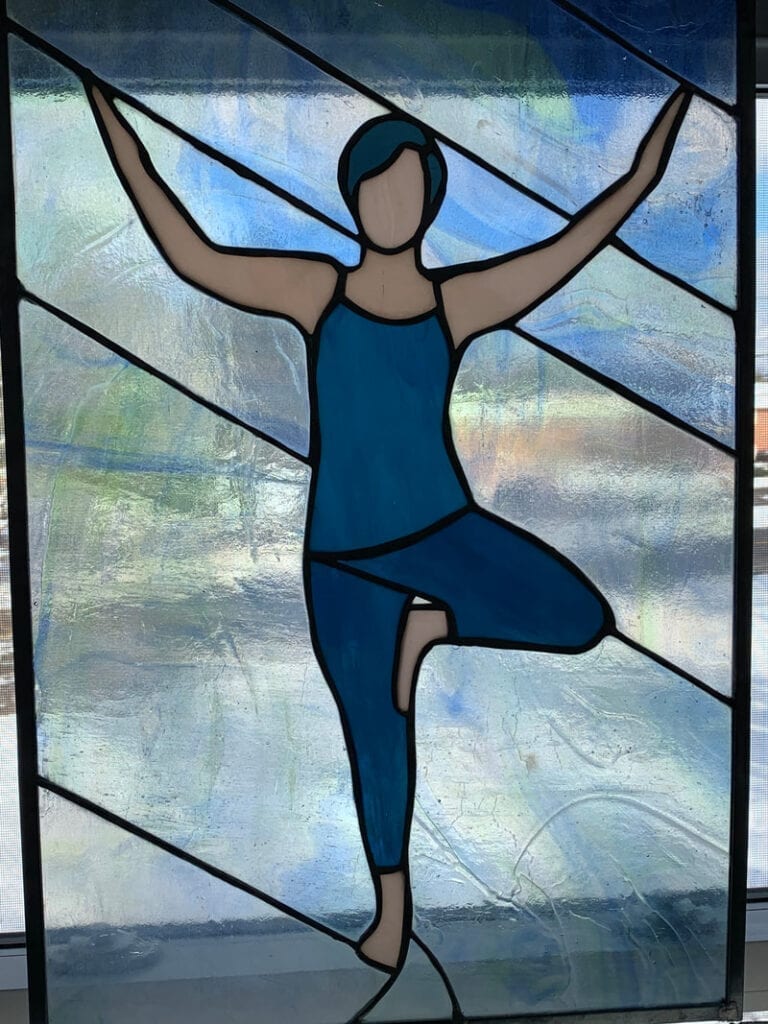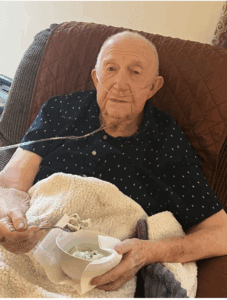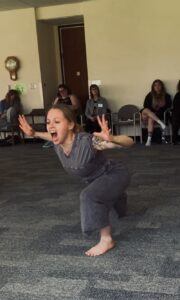– Inside the Yoga Sutras
“We spend our days badgered by voices that tell us to judge others, fear others, harm others, or harm ourselves. But we are not obligated to listen to those voices, or even to take responsibility for them. They may be where we come from, but they are not where we are going. There is another voice, a voice that shines. Ahimsa is the practice of listening to that voice of lightness, cultivating that voice, trusting that voice, acting upon that voice.”
– Rolf Gates, Meditations from the Mat
Ahimsa does not just inform our work with clients but also how we take care of ourselves as therapists. In the clinical setting, we practice Ahimsa in the words and actions we use with our clients to create a trauma-sensitive setting. We also counteract the effects of our own countertransference, vicarious trauma, and burnout as we take a non-harming approach with ourselves. The whole framework and modality of EMDR therapy embodies Ahimsa as we help our clients heal from trauma and cultivate a peaceful therapeutic setting.
Practicing Ahimsa in phase 1 of EMDR therapy influences the process of history taking with our clients. As clinicians, we must be mindful of how we conduct a mental health assessment and talk to our clients about their past to avoid retraumatization through asking about unnecessary details in regards to their traumas. Because of the fragmented nature of how trauma memories are stored, clients may not be able to identify an accurate timeline, or when they do start recounting specific memories, the proverbial can of worms opens and clients become flooded with trauma memories. We can avoid this by slowly exploring clients’ histories and not worrying about getting the exact historical details. We must remember what matters in history taking is the client’s perspective of their experiences and how they’ve integrated these memories into their view of themselves. Because of the triggering nature of our clients’ pasts, we may need to wait to obtain a full history (and this may not ever come to full fruition) and allow the conversation to be client directed. Though there are certain nuggets of information necessary to obtain to form a diagnosis and identify a treatment plan, it is more important for the wellbeing of our clients to practice Ahimsa by not asking for too much information too fast.
As we move into phase 2 of EMDR therapy, we can work with our clients to identify resources they can utilize throughout the therapeutic process and which embodies a way to direct our clients to practice Ahimsa. This can start as early as the first session as we explore the resources clients already have in place and can utilize in therapy. Exploring resources in addition to history taking can help counteract possible retraumatization in phase 1. The main purpose of resourcing is to help clients tolerate processing the traumas identified during history taking. During this phase of treatment, we can teach our clients coping skills and resources that will help them stay in their window of tolerance without self injury in thought or deed. Through guided visualizations of the Light Stream, the Calm Safe Place, and the Container Exercise installed with BLS, we strengthen our clients’ internal resources to enhance Ahimsa. As a further way to practice Ahimsa, we can also offer to install other individualized positive resources with bilateral stimulation, such as positive experiences, relationships, and achievements.
In phases 3-6 in EMDR therapy, we help clients practice Ahimsa by identifying targets to process and then engaging in bilateral stimulation to desensitize the memories and reprocess the associated negative beliefs. These beliefs perpetuate internal self-injury in the messages clients tell themselves and external self-injury in the form of harmful coping mechanisms, drug and alcohol abuse, and even cutting. Flooding and abreactions can occur during processing with clients who are extremely traumatized, pushing them outside their window of tolerance. Though we want to keep pushing forward to help clients move through these memories, we must practice Ahimsa to help them stay within the space of being comfortably uncomfortable. This can occur by drawing upon their previously installed positive resources, utilizing different cognitive interweaves, and knowing when to slow the processing train down. It also involves an understanding of when to integrate modifications into phases 3-6, such as having a client open their eyes during processing, integrating grounding techniques in between sets, and utilizing the container when clients are flooded by memories. By desensitizing these target memories, our clients practice Ahimsa by living peacefully in the present instead of through the lens of past traumas.
Traditionally, in the practice of Ahimsa, we tend to think of non-harming in the physical sense. This is certainly a reality for many of our clients who engage in physical self-harm through cutting, drug and alcohol addiction, and eating disorders. However, self-harm can present as an internal self-injury through negative self-talk. As clients desensitize their traumatic memories, the associated negative cognitions reprocess, allowing for the integration of positive cognitions, which is then installed with bilateral stimulation. This allows clients to let go of negative cognitions that do not serve them and minimizes negative self-talk and coincidental internal self-injury. Through this, our clients are actively practicing Ahimsa by listening to their positive internal voice.
A further practice of physical non-harming occurs in the body scan phase in EMDR therapy. We ask our clients to scan their body and notice any disturbances while thinking about the target memory and positive cognition. Any residual disturbances they may report can be lingering somatic experiences of the traumatic memories, and reprocessing these can lead to further healing. Though this phase of EMDR therapy may seem extraneous, it allows for some of the deepest processing due to trauma memories being stored at a very base body level. It is often the very last fibrous roots of trauma memories that need to be weeded out. The body scan offers an in-depth way to heal physically from the traumas, leading to a continued state of peace and calm in which to continue practicing Ahimsa.
EMDR therapy is based on the three pronged model of addressing and reprocessing past, present, and future targets to help clients reach optimal functioning. Reprocessing past and present targets offers a way for clients to heal. Installing a future template lays the groundwork for an ongoing mindset of practicing Ahimsa. By visualizing positive ways to handle related situations, clients automatically create an internal positive environment to respond to new and different situations. This is also a way to carry their installed positive cognitions into future scenarios to which they will respond. This will help them to strengthen their practice of Ahimsa as they continue to install and strengthen their positive cognitions and strengths.
As EMDR therapists, we hear trauma all day long. Reprocessing these memories leads to so much healing for our clients but can take a toll on us as therapists through countertransference, vicarious trauma, and burnout. It is imperative as clinicians to practice Ahimsa ourselves. This may manifest as taking a mental health day, limiting the number of clients seen back to back, making sure to take a quick break in between sessions to eat, drink water, and to answer the call of nature. It should also include a rigorous self-care routine outside of work in which you engage in activities that ground and replenish you. In sessions, staying grounded and mindful while practicing Ahimsa will help you to stay present with your clients without absorbing all of the emotions and energies they are outputting as they process their own trauma. Having a self-practice of Ahimsa will enhance your abilities as a clinician and assist in staying engaged with your clients.
Practicing Ahimsa guides us in living in a peaceful way within ourselves and within the world. Not only does non-harming refer to refraining from physically and verbally hurting someone else, it also applies to how we treat and speak to ourselves. As EMDR clinicians, we are teaching our clients to practice non-harming through reprocessing their traumas in the 8 phases and installing positive cognitions that inform how they live their lives moving forward. Through Ahimsa we discover the light within ourselves that directs us in our lives.














